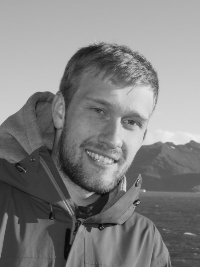PhD defence: Arctic Thermokarst Lakes – Carbon Comes and Goes

PhD Candidate: Ove Meisel
Defence date: 28-03-2024
Time: 09:45
Institute: Vrije Universiteit Amsterdam
Location: VU Aula
Online: Livestream
PhD supervisors:
prof. dr. Han Dolman
dr. Jorien Vonk
dr. Josh Dean
Title thesis: Arctic Thermokarst Lakes – Carbon Comes and Goes
Abstract:
This PhD project focused on the physical and biogeochemical variability of Arctic thermokarst lake sediments and the resulting impact on the greenhouse gas (GHG) emissions of these lakes.
A better understanding of this topic is of importance because thermokarst lakes induce large-scale erosion of sediment organic carbon (SOC) along their shorelines and thawing of underlying permafrost ground below their lakebeds. As a result, thermokarst lakes are highly dynamic systems which can act as natural incubators which degrade the eroded and thawed organic carbon (OC) and effectively convert it to GHGs. The Arctic is already affected by higher rates of warming than any other region on the planet and the additional release of GHGs further feeds into a positive feedback loop of Arctic warming.
The basis of this study were 22 sediment cores collected during Arctic field campaigns that were carried out as part of this PhD project. The two study regions were in the Alaskan Arctic Coastal Plain and in Far East Siberia near the northern stretch of the Indigirka River. These two regions have high numbers in thermokarst lakes which cover 23-40 % of the land area. That makes them two of the most critical areas for Arctic thermokarst lake carbon dynamics.
The sediment and carbon characteristics of two lakes from each study region were described in detail while the local geological and geographical features were considered as key factors. This included underlying Pleistocene-aged marine deposits below the two Alaskan thermokarst lakes, a Late Pleistocene-aged yedoma soil plateau along the shoreline of one Siberian Lake, and differences in lake depths across the four study lakes. To characterize the lake sediments in detail a wide array of analyses was conducted: grain size, porewater content, gamma-ray bulk density, magnetic susceptibility, X-ray fluorescence elemental composition, loss-on-ignition, dissolved organic carbon (DOC), SOC, stable carbon isotope (δ13C) measurements on DOC and SOC, radiocarbon dating, and microbial 16S rRNA gene amplicon sequencing.
Lastly, a long-term incubation experiment of 11 intact sediment cores from the four Alaskan and Siberian lakes was carried out to summarize the two previous lake characterization studies and to compare thermokarst lake GHG emissions across different Arctic regions. The incubation study focused on diffusive and ebullitive methane (CH4) and carbon dioxide (CO2) emissions and their corresponding δ13C values. The GHG results of the incubation experiment were put in context with the preceding lake characterization studies and their sedimentary and biogeochemical findings (e.g., differences in sedimentary OC content).
In summary, this PhD project presents a synthesis of Arctic thermokarst lake sediment dynamics with a focus on OC across the two important Arctic thermokarst lake regions of northern Alaska and Far East Siberia.


